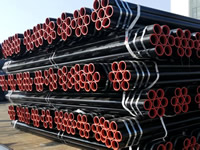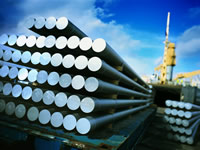Baosteel starts new production lines in Zhanjiang

Baoshan Iron & Steel Co Ltd started production at its new project in China’s southern port city of Zhanjiang even as steel prices plunge amid sluggish demand in the country, which is facing its slowest pace of economic growth in 25 years.
The No. 1 blast furnace of the project, designed to have an annual capacity of 4.1 million tonnes of melted iron, was ignited on Friday, China’s biggest publicly traded steelmaker said in a filing to the Shanghai Stock Exchange yesterday.
The project will be fully operational a year later with an expected annual crude steel production of 8.75 million tonnes, Baosteel said.
It usually takes three to six months of trial production before a new steel mill begins commercial operation.
Chinese mills face declining domestic demand for the first time in a generation amid a property slump, which crushed prices in the nation that produces more than half of world output.
Steel reinforced bar, which is used in construction, almost halved in the past two years on the Shanghai Futures Exchange while hot-rolled coil, used in automobile and machinery, dropped 42 percent since its debut in March last year.
Baosteel last month said that it expected a 50 percent to 60 percent drop in net income for the first nine months of the year, citing foreign exchange losses related to debt restructuring after a surprise yuan devaluation.
Chinese steel demand has plateaued at about 800 million tonnes, Nev Power, chief executive officer of Fortescue Metals Group Ltd said in an interview on Tuesday. Any rise beyond that will probably be driven by stimulus, infrastructure and property development growth, he said.
However, Vale SA pushed back against claims steel consumption in China has peaked, saying demand in the top user still has some way to go in a view that contrasts with a rising number of global banks.
“China’s steel consumption peak is still ahead of us but of course the growth will be much more gradual,” Vale global director of ferrous marketing and sales Claudio Alves said.
Vale aimed to boost its market share, he said.
Major global miners are seeking to figure out the implications of slowing growth in China on demand for everything from iron to copper.
While Vale’s view echoes outlooks from Rio Tinto Group and BHP Billiton Ltd, Australia & New Zealand Banking Group Ltd brought forward its peak-steel estimate to last year from 2020 and Credit Suisse Group AG said local consumption will shrink 10 percent by 2018.
“Despite the slowdown of the growth speed, China still remains the economic engine of the world,” Alves said.
Further urbanization and infrastructure projects will underpin demand for iron ore, steel, copper and other base metals, he said.
XINSTEEL INFORMATION

 +86 371 55057610
+86 371 55057610  inquiry@xsteelplate.com
inquiry@xsteelplate.com








 Tel:+86 371 55057610
Tel:+86 371 55057610  Fax: +86 371 5505 7611
Fax: +86 371 5505 7611